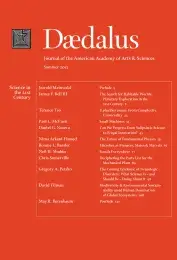E pluribus unum: From Complexity, Universality
In this brief survey, I discuss some examples of the fascinating phenomenon of universality in complex systems, in which universal macroscopic laws of nature emerge from a variety of different microscopic dynamics. This phenomenon is widely observed empirically, but the rigorous mathematical foundation for universality is not yet satisfactory in all cases.
Nature is a mutable cloud, which is always and never the same.
–Ralph Waldo Emerson, “History” (1841)
Modern mathematics is a powerful tool to model any number of real-world situations, whether they be natural–the motion of celestial bodies, for example, or the physical and chemical properties of a material–or man-made: for example, the stock market or the voting preferences of an electorate.1 In principle, mathematical models can be used to study even extremely complicated systems, with many interacting components. However, in practice, only very simple systems (ones that involve only two or three interacting agents) can be solved precisely. For instance, the mathematical derivation of the spectral lines of hydrogen, with its single electron orbiting the nucleus, can be given in an undergraduate physics class; but even with the most powerful computers, a mathematical derivation of the spectral lines of sodium, with eleven electrons interacting with each other and with the nucleus, is out of reach. (The three-body problem, which asks to predict the motion of three masses with respect to Newton’s law of gravitation, is famously known as the only problem to have ever given Newton headaches. Unlike the two-body problem, which has a simple mathematical solution, the three-body problem is believed not to have any simple mathematical expression for its solution, and can only be solved approximately, via numerical algorithms.) The inability to perform feasible computations on a system with many interacting components is known as the curse of dimensionality.
. . .
